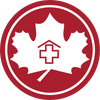What is Sleep Apnea?
Sleep Apnea is a potentially life-threatening sleep disorder. It can affect people of any age, from newborns to elderly. Instead of the partial collapse of the airway in the throat associated with snoring, Sleep Apnea causes a nearly complete obstruction of the airflow. Apnea is defined as an absence of airflow for 10 seconds or more. People who suffer from sleep apnea stop breathing many times during sleep. This may result in a significant drop in oxygen levels in the blood and often the person’s blood pressure and pulse will rise to high levels.
Obstructive Sleep Apnea (OSA) is the most common type of sleep apnea. When the muscles of the soft palate at the base of the tongue and uvula (the small fleshy tissue that hangs from the center of the back of the throat) relax and sag, the air passage gets blocked, making breathing labored and noisy, and even blocking it entirely.
Symptoms
People likely to suffer from or develop OSA may have one or a combination of the following symptoms:
- Excessive daytime sleepiness
- Snoring, choking, gasping
- Trouble concentrating and decreased attention
- Impairment of intellectual capacity
- Lack of motor coordination
- Sexual dysfunction
- Headaches
- Depression
- Memory loss
- Irritability
- Frequent urination
- Obesity or Heaviness
- Short Mandible (lower jaw)
Negative Effects
If OSA is not treated, the possible risk increases are:
- High blood pressure
- Heart disease and heart attack
- Stroke
- Fatigue-related motor vehicle and work accidents
Treatment
Nasal CPAP Therapy is the most common and is, in many cases, an effective treatment for Obstructive Sleep Apnea. CPAP (Continuous Positive Airway Pressure) Therapy is a prescribed medical device that supplies a gentle flow of positive pressured air creating an artificial splint allowing the airway to remain open. The air is delivered through a mask applied over the person’s nose and/or mouth. The air pressure prevents the airway from collapsing in sleep, thereby limiting the apneic episodes and associated frequent awakening from sleep. CPAP Therapy must be prescribed by a certified Sleep Physician.
|
Normal
|
OSA
|
CPAP
|






